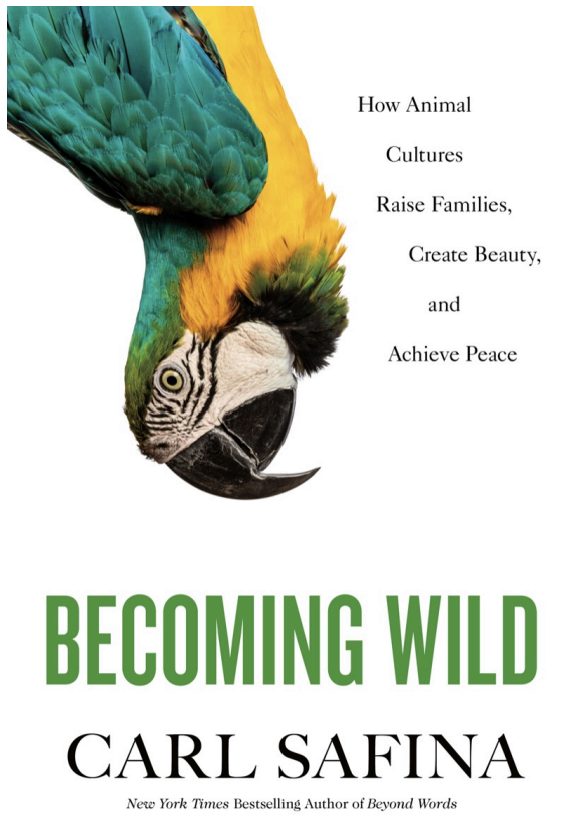Maria Travaglio Ramirez
Learning “how we live” from others is human. But learning from others is also raven. Ape and whale.
It is a relatively new discovery that of animals having personalities and feelings. It has perhaps taken us so long because they don’t manifest these traits as us humans do. However, it is only since we have stopped seeing animals (or as Carl Safina likes to call them ‘Life companions’) through a strictly scientific lens, that we have begun to understand them more deeply, more holistically. ‘Becoming Wild’ by Carl Safina is an eye opening book that takes what we know about our Life companions far beyond what we are usually told. Safina takes the reader on journey in the realm of a few selected species and shows us that what we thought was intrinsic to their nature, might not be so natural after all.
Let’s begin by talking about culture. What is culture? When we first look it up online we come across the following definition: “the arts and other manifestations of human intellectual achievement regarded collectively.” Sounds about right, but let’s take a closer look. The word human alludes to the fact that this term is restricted to belonging to us humans, that only we fulfill its meaning, what if this wasn’t the case? As I see it animals are also artistic; they manifest through rituals, take for example the mating dances of many birds. Furthermore, animals are intellectual, they possess clever methods of communication of which we will see an example further on. Consequently, why make culture only human? According to us culture is not innate, it is passed through generations. Our grandparents and parents show us what is typical of our culture and it is because of this that we express it. Instead, when we think of animals, we think that most of their traits are part of their nature, that somehow it is written in their genes how they must behave for the most part. However, in his book Safina demolishes this limited preconception and introduces us though many examples to the vivid culture of animals, making us question whether this definition should be extended to all living beings. Talking about passing on knowledge through generations, this book was recommended to me by my mother and there was one chapter in particular that she could not stop talking about, the one about whales. Sometimes we are less aware of what lurks in the Ocean than what does on land, some think less of a fish than a dog or a cat or a cow. Maybe it is because we are terrestrial beings that we are less acquainted to the life in water, and perhaps this is why we are so surprised to learn that whales, the giants of the Ocean are in fact intelligent, organized and even playful creatures. And that not all whales behave the same, even when they belong to the same species.

In fact, Safina recounts one of his adventures, where he spent months at sea studying the behavior of groups of Sperm whales. Did you know that Sperm whales communicate in “clicks” ? However, depending on what clan they are from the sequence and speed of the clicks they use to communicate is different. It’s not far fetched to establish a parallel with dialects here, the Italian language for example has so many dialects, whose survival is purely
generational (they are not taught in school) just like older whales teach their youngsters the particular sequence of clicks of their group. Moreover, the nursing habits of Sperm whales also differ according to their group, in some only the mother nurses the baby, while in others it is a job shared upon multiple females. While this practice was more common in the past, it is not un ordinary to have women that breastfeed other’s babies in some cultures, while in others mothers prefer to breastfeed their own babies. Sperm whales are also social, they enjoy spending time with whales of other groups yet they are also diffident of the groups they do not bond well with. Doesn’t all this sound so familiar? So human.
In sum, what Safina is trying to tell us is that nature gives us the tools to navigate life, but it is up to us (all living beings) to develop and learn the best ways to use them. And the best way of learning is from others, a beautiful quote in the book reads: “Learning “how we live” from others is human. But learning from others is also raven. Ape and whale.” What this means is that just like we do, animals also learn from each other and we must not limit ourselves to just learn things from other humans, because if we expand a little our horizon and take a closer look at the communities of living beings that surround us, there is a greater deal that can be learned.
Maria Travaglio Ramirez